You’re going to be bringing a new cat home soon. Whether it’s a new kitten, an adult cat, or an older cat, you want to know how to get her used to her new environment. How to acclimate a cat to a new home? Preparation is key.
What’s going to make your new family member feel comfortable? What can you do to provide her with a safe and protective space? Learn more about acclimating your cat to a new home to ensure that she transitions as smoothly as possible.
Give Your Cat a Room
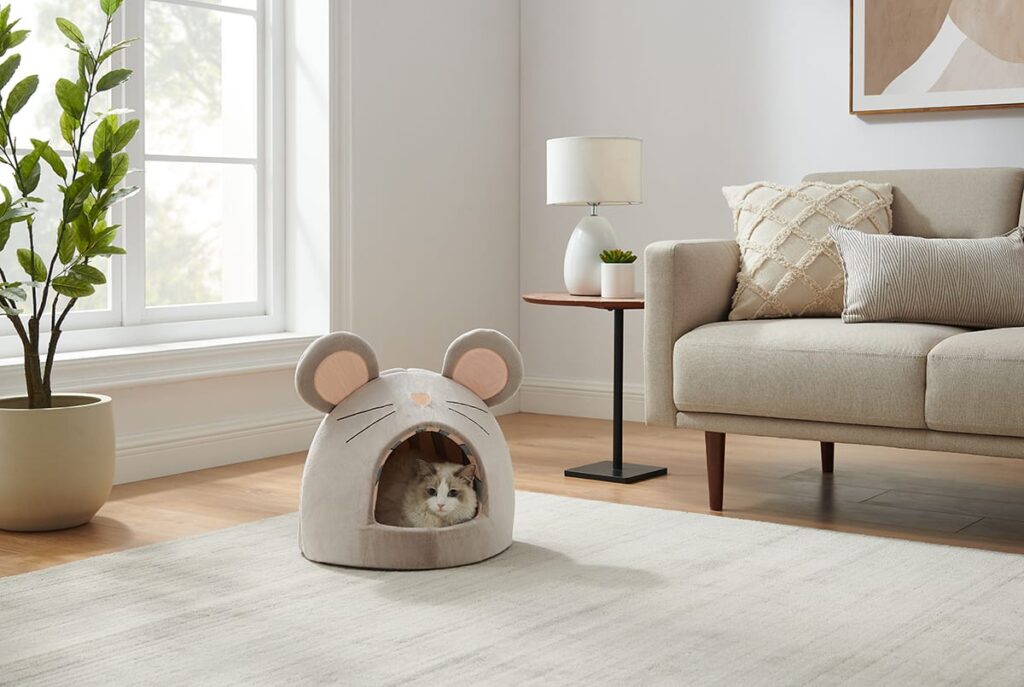
If you have an extra room in your place, designate that area as your new cat home for now. Place her litter box in the new room, along with a cat bed, cat food and bowls, water bowls, toys, a scratching post, and a cat tree.
Having access to the entire house at first may be overwhelming, so start off with the one room until she gets more comfortable being in her new surroundings.
This safe room will calm her anxiety if she is experiencing any. It will also be her safe place if she needs a refuge when you’re having people over or there are loud noises in your home. You could install a cat flap on the door so that she can go in and out as she pleases and gets used to your home at her own pace.
Use a Cat Carrier

When bringing your new cat home for the first time, get a secure but lightweight carrier you can transport her in. It will make her feel safe as well as protect her. It’s best to get a carrier you can open from the top and then lower the cat into. You could cover the carrier with a lightweight blanket or towel so that your cat feels safer as well.
Pet Tour Pet Travel Carrier, Black
$65.99
The Outward Hound Pet Tour Carrier is loaded with features to keep you and your pet comfortable during travel. This breathable travel pet carrier includes interior padding for your pet, a padded shoulder strap for you, and 360 degree mesh panels for ventiliation. It has multiple entry points from the top and the side of the carrier as well as locking zippers. It’s the perfect pet carrier for vet visits,…
Put Out Toys
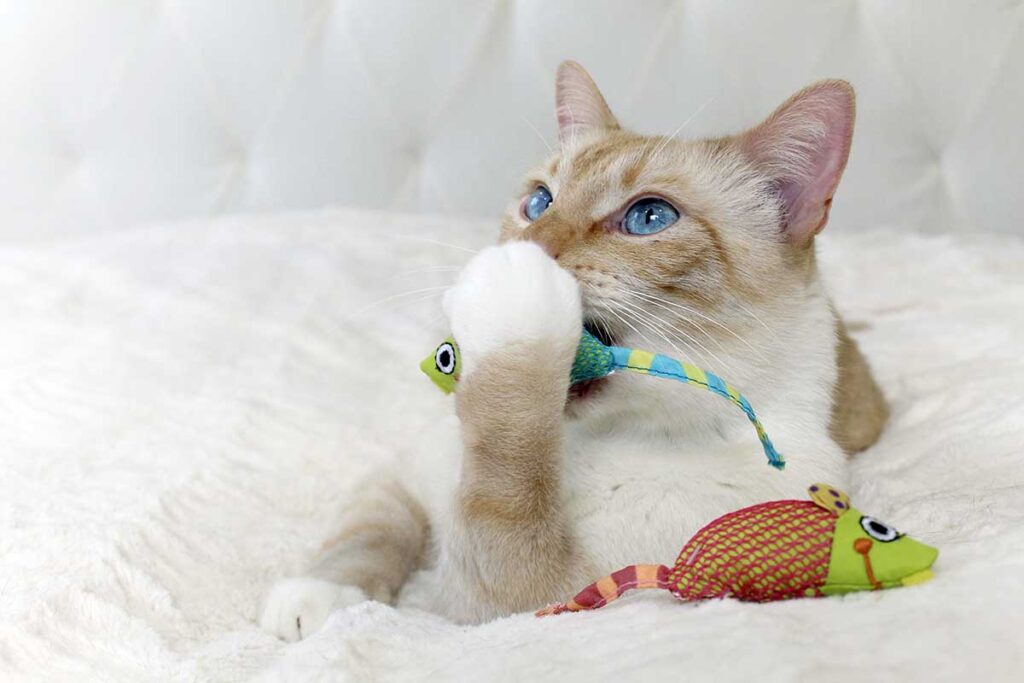
Cats need playtime at least once or twice a day for 15 minutes per session. Not only will your cat love playing with you, but also, it will help her feel more relaxed in her new territory. Since cats are natural hunters, you can buy a toy that will help your cat tap into her natural hunting instincts.
Straw-Babies Cat Dental Catnip Toy will drive your cat wild and help her fulfill her natural urge to hunt. The feathered cat toy comes with cat nip and crinkles to keep your cat engaged. Plus, the multiple textures will keep your cat’s teeth clean.
Straw-Babies Cat Dental Catnip Toy – 3 Pack, Pink
$5.99 $3.99
Straw-Babies 3 Pack by Petstages is a delightfully engaging catnip toy your kitty needs! The feathered cat toy contains catnip and crinkle to keep cats engaged in play and activate their natural hunting instincts. Multiple textures help floss to keep teeth clean for good dental health. These berry-sized toys are also perfect for cats to bat at, carry around, and chase!HELPS CLEAN TEETH: Multiple textures…
Give Your Cat a Hiding Place
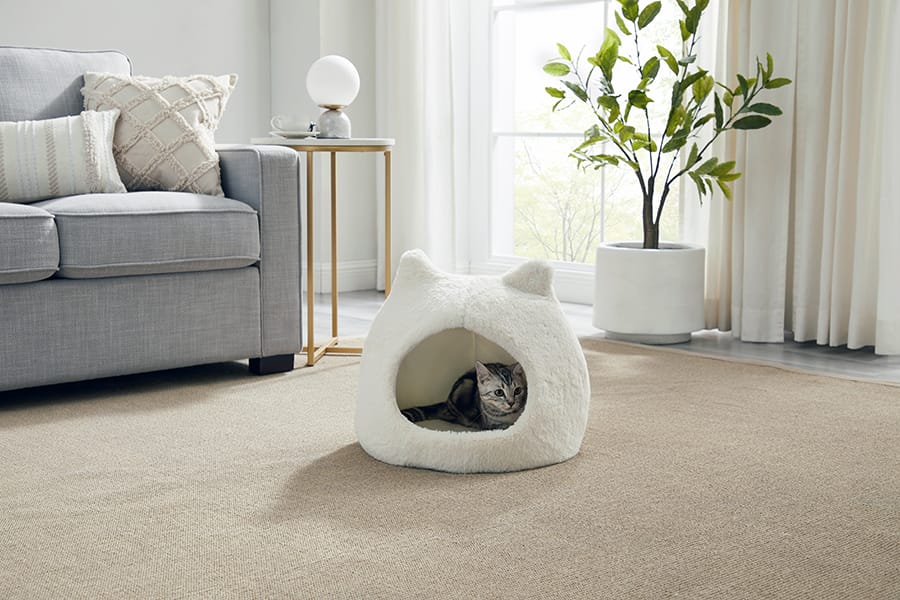
Along with a safe room, you can provide your cat with a variety of hiding places to make her feel more comfortable. Place cardboard boxes in a quiet corner of your home, for instance, so she can play in them and hide out there if she needs to. You could even put a cave cat bed or blankets and toys in the cardboard box to make her feel better.
A great option for a cat bed is the Cozy Cuddler Cat and Dog Bed. It comes with an attached pet blanket and a flexible design so that your cat can curl up or sprawl out depending on how she feels. It also comes with a soft faux fur interior, which will make your pet feel warm and cozy.
Meow Hut Fur Cat Bed, 17×17
$29.99 $15.00
Meow Hut Covered Dog & Cat Bed: Made for the Ultimate Snuggling Experience. The Best Friends by Sheri Meow Hut in Fur for dogs & cats is designed to offer your pet a safe and secure place to rest enveloping them in calming comfort. The soft padded foam provides optimal support for joints and a comforting place for relaxation. The ultra-soft vegan fur material offers a cozy snuggle reminiscent of their…
Cozy Cuddler Cat & Dog Bed, 23×23
$34.99
Help your pet feel comfortable and secure! Whether they’re afraid or feeling anxious, it’s not uncommon for dogs and cats to hide under the bed or other furniture. Not only does it provide a sense of security, but it might also feel warmer and more comfortable. With bolstered walls providing head and neck support, pets can lay in whichever position is best for them! The overstuffed walls and cushion…
Try Calming Pheromones
If your cat is having trouble adjusting to her new house, she may be experiencing anxiety. Perhaps she had bad experiences in other people’s homes or she’s simply a skittish cat. You can invest in Feliway’s Classic Diffuser, which is a calming pheromone diffuser you plug into the wall.
It will emit a synthetic type of pheromone that cats naturally make from the scent glands located in their cheeks. You can plug this into her safe place, or anywhere else in the house, to relieve some of her stress.
Make Your Home Cat-Proof
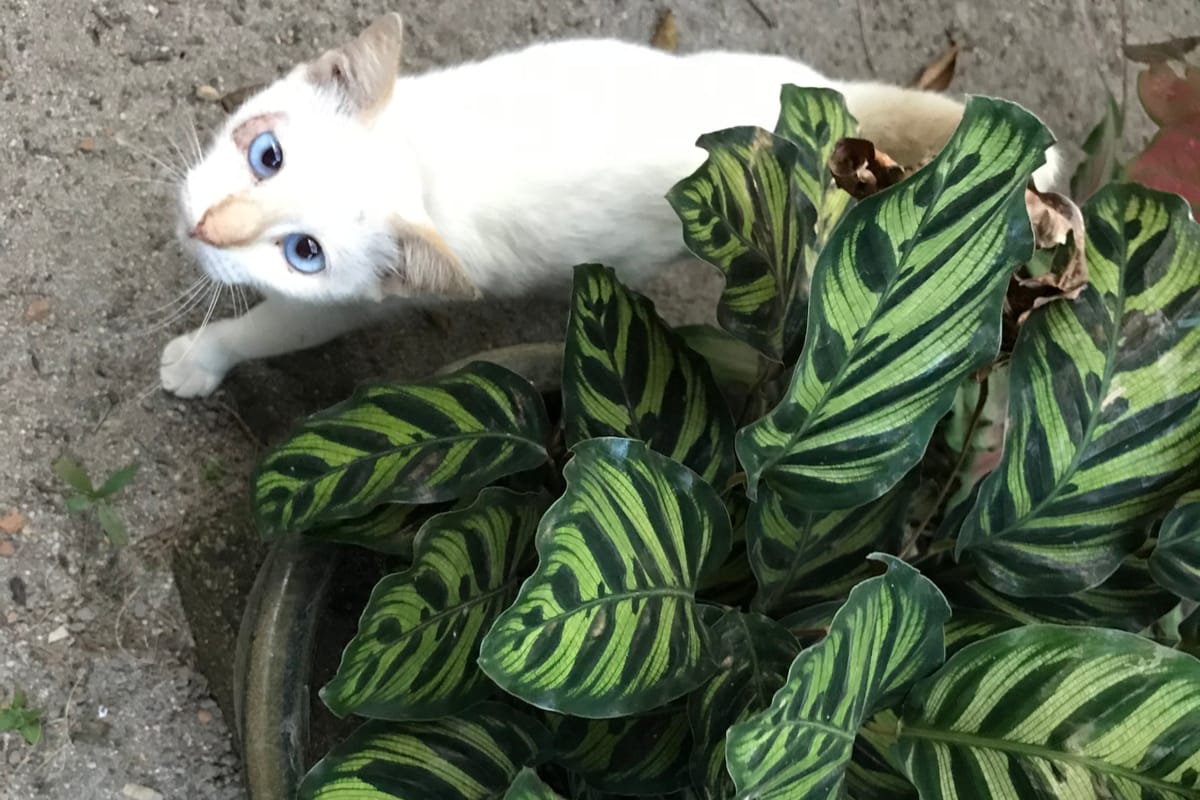
You need to make your home as safe as possible for your new cat, which means that you’ll have to make some things cat-proof. For instance, since cats go after electrical cords, you can use plastic cord management covers or wrap your cords with double-sided tape to protect your kitty.
Also, look into poisonous plants you need to keep out of your home. Some of these include oleander, peace lily, sage palm, daffodils, and amaryllis. If your cat gets into poisonous plants, she may get very sick and, in the worst-case scenario, pass away.
Since cats can jump, don’t leave anything fragile out where she may destroy it and get hurt. If you’re going to light candles, for instance, make sure you supervise your cat around them at all times.
Make an Introduction to Your Other Cats
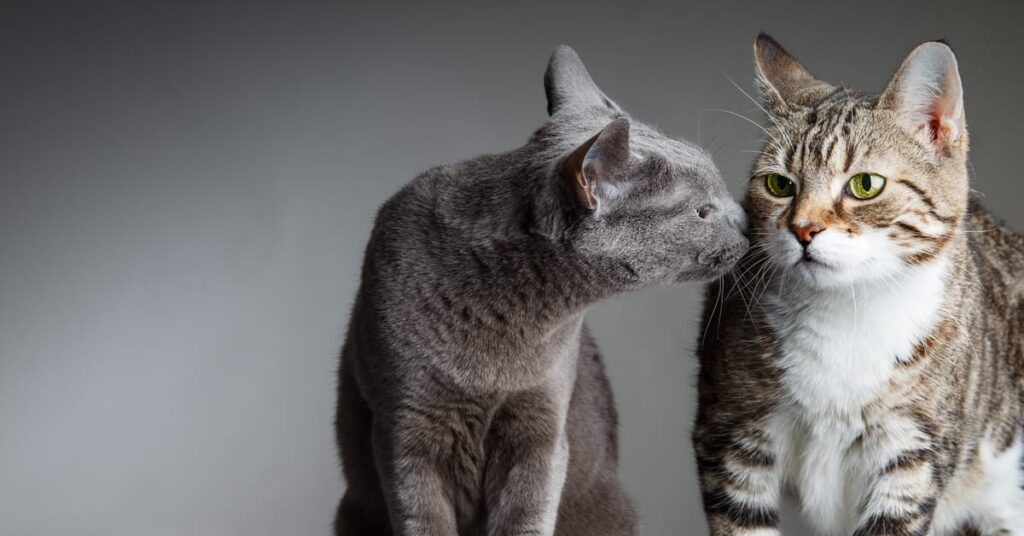
If you have one or more cats before you bring home your new cat, make sure you introduce a cat the right way. On the first day, instead of having your feline friends meet right away, do scent swapping instead. You can have them exchange bedding so that both of their scents will mix and create a communal scent. If your new cat has a positive reaction, that means you can proceed. But if the reaction is negative, you may need to introduce both of your cats at a slower pace.
The resident cat could also spend a night in the new cat’s space to get used to her. Your new cat should be relaxed and not skittish when you do this. If your resident cat shows signs of distress because she’s in a new place, then don’t do this.
Once that step is completed, you can do a visual introduction and have your cats see each other through a baby gate or a door that’s held slightly open so that they can’t pass through. Then, you can do supervised contact. If that goes well, you can try unsupervised contact for short periods of time. If you’re sure that they’re getting along, you can then leave them alone together for longer periods of time.
Bringing Your New Cat Home
It’s exciting to get a new cat. By following the right steps on how to acclimate a cat to a new home, you can ensure that she enjoys her new space and feels comfortable playing, eating, sleeping, and living there with you.




